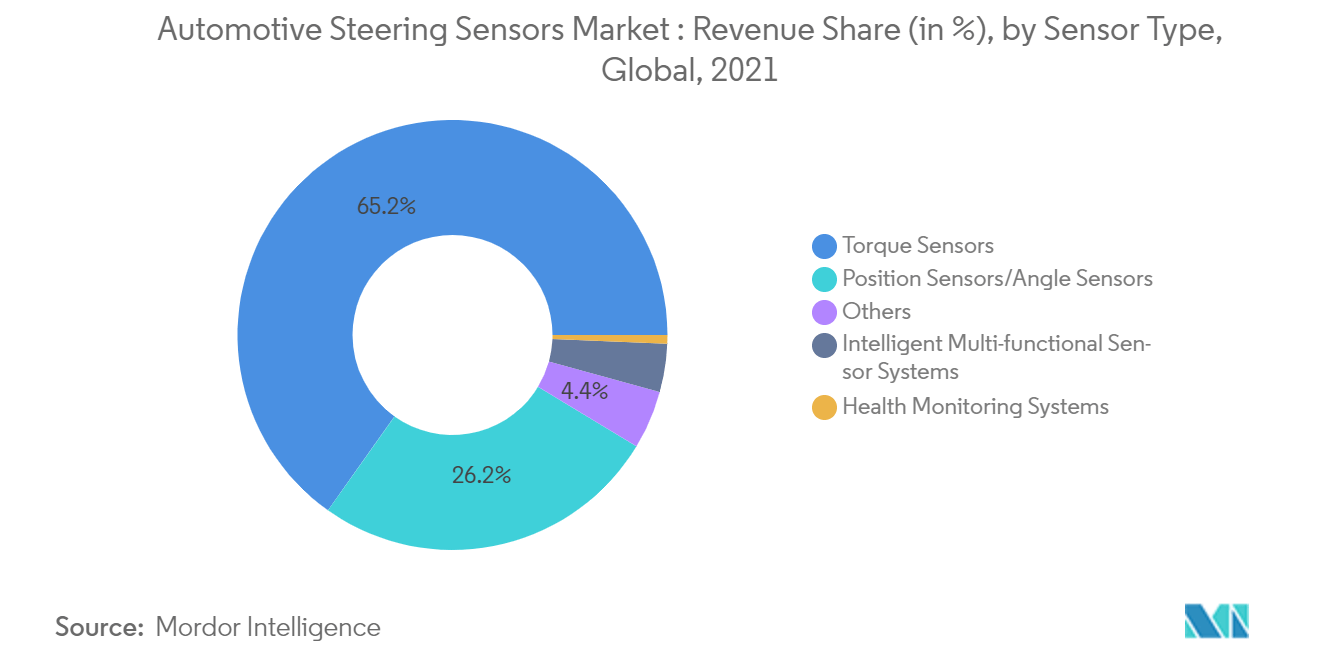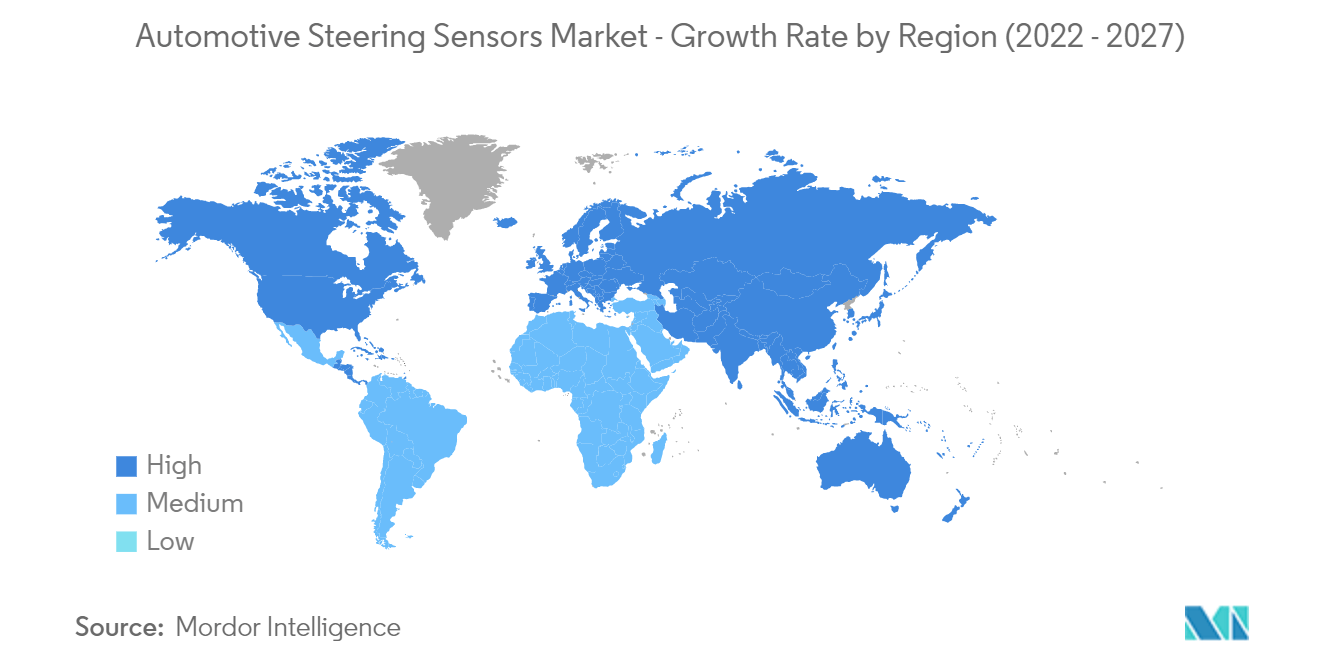Market Trends of Automotive Steering Sensors Industry
Torque Sensors Experience the Highest Demand
Torque sensors measure the steering torque applied by the driver. The vehicle's electronic control units receive the input from the torque sensor and the motor, or the pump applies the required torque back or assistance on the steering column.
The torque sensor is utilized in automobiles' electronic and hydraulic power steering systems. Nowadays, all cars come with either hydraulic power steering or electronic power steering. As a result, the torque and angle sensor market is expected to flourish in the forecast period due to an increase in global demand for power steering systems.
With growing advancements in technology, sensor products have also been consistently upgraded and improved in the automotive industry. To cater to the market, many OEMs and others are investing in research and development. For instance,
- In May 2022, Nexteer Automotive and Continental AG jointly expanded their two new software functions that provide backup safety layers for all variants of Electric Power Steering and Steer-by-Wire systems and across all driving automation (levels 1 - 5).
- In October 2021, Nexteer Automotive announced the addition of its new modular column-assist EPS system (mCEPS) to its electric power steering (EPS) portfolio, which is designed to fulfill the needs of a wide range of OEMs. Nexteer's high-performance torque and rotation angle sensors are custom-developed to deliver superior noise, vibration, and harshness (NVH) performance and a smooth and precise steering feel, allowing drivers to feel more connected to the road.
- In July 2021, UD Trucks Corp. announced that UD Active Steering, a groundbreaking technology that dramatically enhances steering precision and driver comfort, will be offered in Japan on heavy-duty flagship Quon models. An electric motor is installed above the hydraulic steering gear in UD Active Steering to give additional torque when needed. The electronic control unit (ECU) on the electric motor gets input from sensors all over the truck every 2,000 seconds, monitoring the driving environment and the driver's actions.
Such improved sensor products for torque sensors are expected to witness increasing adoption by automakers during the forecast period.

Asia-Pacific Holds a Significant Share
The Asia-Pacific region is expected to become the major market for the manufacture of these systems, with India, Japan, and China moving toward becoming manufacturing hubs for automotive components and sourcing the same to countries such as the United States and Germany.
The automotive industry in Asia-Pacific has been very dynamic over the past few years, owing to the increasing per capita income of the middle-class population and cost advantages for original equipment manufacturers (OEMs). The region is known for producing compact and cost-effective cars and comprises some of the fastest-developing economies of the world, including China and India.
China is dominating the Asia-Pacific automotive steering sensors market in the Asia-Pacific region. China is a significant vehicle market in the Asia-Pacific region. Furthermore, the country dominates the Asia-Pacific automotive sensors industry. This is due to increased acceptance of car safety measures as well as a rise in advanced technology for safety such as ESC, Advanced Driver Assistance Systems (ADAS), etc. In April 2022, the increased frequency of COVID incidences in China created challenges for market players and put negative pressure on the Chinese economy. During this time, the automobile industry and supply chain were pushed to the ultimate challenge. Furthermore, some of the major automakers shut down production and faced enormous logistical challenges, resulting in a collapse in delivery capacity.
The main factors influencing the growth of the Indian automotive steering sensors market include an increase in demand for motor vehicles across the country due to an increase in consumer disposable income and an increase in demand for fuel-efficient automobiles. Other factors that are expected to have a significant influence on the market over the forecast period include an increase in customer desire for easy driving and agility, the high cost of power steering systems, and drive-by-wire technology.
Companies involved in the supply and distribution of steering sensors are looking forward to widespread expansion in other potential markets. Several OEMs are collaborating with automakers to improve their goods. Sensor items have also been continually upgraded as technology has advanced. For instance,
- In January 2022, as a part of the consolidation of its operations in the Indian market, ZF acquired a majority stake in the Rane TRW Steering Systems joint venture with the Rane Group. The new joint venture will operate under the name of ZF Rane Automotive India and produce steering systems for commercial vehicles.


